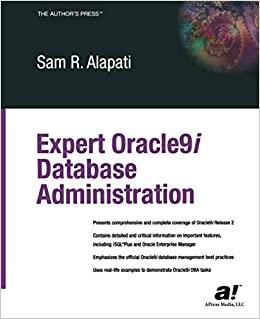Question
Task 1: This task requires you to test the Segment-test dataset (segment-challenge.arff) in Weka on two classification algorithms Nave-Bayes and Random-Tree Decision Tree (RT). Select
Task 1: This task requires you to test the Segment-test dataset (segment-challenge.arff) in Weka on two classification algorithms Nave-Bayes and Random-Tree Decision Tree (RT). Select the Segment-test data set and keep the default values for pre-processing.
Problem 1 : Cross-validation - Run the Nave-Bayes classifier by selecting 3 different numbers of folds (for example, do 3 different runs by selecting 6, 9, 14 folds in each run respectively). Now, run the Random-Tree classifier by selecting the same number of folds selected for the Nave-Bayes classsifer (for example, if you selected 6, 9, 14 folds for Nave-Bayes, use the same 3 numbers for Random-Tree). 1. Do the number of folds have any correlation with the number and percentage of correctly classified instances within the same model (For example, 6 folds and 9 folds in NB and RT respectively)? Explain the results. 2. Do the same number of folds when applied to different models have any effect on the number and percentage of correctly classified instances (For example, 6 folds and 9 folds in NB and RT)? Explain the results. 3. Select 1 set of results generated for each classifier. For example, if you performed a test by selecting 9 folds, select the results you obtained for 9 folds for both NB and RT. Considering all classes in the dataset; calculate the accuracy and error rate from the confusion matrix provided by Weka. Show the formula and explain the steps in calculating the accuracy and error-rate from the confusion matrix.
Step by Step Solution
There are 3 Steps involved in it
Step: 1

Get Instant Access to Expert-Tailored Solutions
See step-by-step solutions with expert insights and AI powered tools for academic success
Step: 2

Step: 3

Ace Your Homework with AI
Get the answers you need in no time with our AI-driven, step-by-step assistance
Get Started


